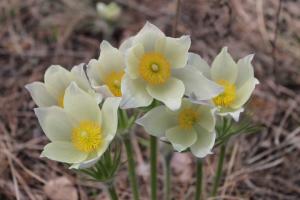Rich in phosphorus, calcium, sodium, magnesium, iron and vitamins, radishes are a welcome guest on our tables. It has a positive effect on the cardiovascular system and gastrointestinal tract, helping to restore strength after winter with its colds and colds. This is the earliest vegetable that grows in our garden, which means that sowing occurs earlier than other vegetables, when they are just beginning to prepare a place for them. When is the best time to plant radishes, and what care does it require in open ground?
We cultivate in our gardens annual plant radishes of the Brassica family (Cruciferous) for the sake of the root vegetable, which is actually a modified shortened stem. A rosette of leaves forms above it, and a taproot with a small number of lateral roots grows below. Leaves may be different shades green color: from dark green to very light yellowish green. The root of most cultivated varieties grows from 15 to 30 cm.
It takes 20 to 40 days after sowing until the desired maturity of the root crop, depending on the variety and care. This is the time when it acquires the greatest taste value and concentration. useful substances. The root vegetable can have different shapes and colors - it can be red, white, yellow, purple, round or flattened ball, long cylinder or spindle. It can be small, weighing only 15-20 g, medium - up to 50 g, large - up to 200 g. The Japanese love to grow giant radishes, which their breeders have worked hard on.
If you do not dig up the root crop, the plant develops further - it forms a stem, peduncles, flowers, and fruits. From the moment of sowing until the fruit ripens, it takes from 150 to 170 days. The flowers are white, pink, even purple, they are collected in a raceme inflorescence. Radishes are cross-pollinating plants. To preserve the properties of the variety, other varieties or related plants (especially radishes) should not be allowed to grow at a distance of 200 m.
Flowering lasts a month, when it ends, the fruit is formed - a dry pod, the seeds ripen 65 or 70 days after flowering. Radish seeds are small brown, round or flat-round; they remain viable for 5–6 years. When buying seeds, you should pay attention to their color - with age, the brown color gives way to gray. 1 g of seeds contains up to 130 pieces.
At industrial production seeds, plants are simply allowed to grow and develop without changing care, and at dachas, gardeners speed up this process by replanting the mother plant ( mother plant) to another place. When it is planted in a new place, or the care is changed (for example, the watering schedule), the plant is more likely to throw out the shoot due to the resulting stress. This is facilitated by high temperatures and increasing daylight hours.
Landing dates
Planting radishes in open ground occurs earlier than other vegetables due to its ability not to suffer from cold and even easily tolerate night frosts. Night temperatures of -6 degrees will not interfere with this vegetable; the main thing is that during the day the temperature rises above +10 degrees so that shoots appear faster. If the temperature rises to +15 degrees, then sprouts should be expected in a week; when the temperature reaches +20, sprouts appear on the 4th or 5th day.
Typically, radishes begin to be sown at the end of March or beginning of April, when the sun is already warm. To speed up the germination process, crops can be covered with film or agrofibre. The root crop grows best at an air temperature of +20 degrees. When it gets hotter and the daylight hours lengthen, the plants rush to bolt, which is why radishes are grown in spring and autumn.
Considering that the harvest is harvested after 16–20 days early varieties or after 40 days for the latest varieties from the moment of sowing, then you can calculate the time when it is better to plant radishes so that they ripen before the heat.
Seeds can be sown after a few days so that the crop ripens almost constantly, but not simultaneously, since it is impossible to store radishes, especially early ones, for more than a few days without losing their taste and beneficial properties.
They usually take a break for the summer, and then start sowing radishes again at the end of August or September. Those who want to eat a fresh, vitamin-rich vegetable all summer long plant it, and then cover the plantings with an opaque covering material with 18-oo every day to reduce daylight hours.
Seeds can be sown unprepared, but in order to increase germination and reduce germination time, they are calibrated, for which they are sifted through a sieve with 2–3 mm mesh, and then soaked warm water or simply leave it in a damp cloth overnight. Large seeds will give good seedlings and, with proper care, large root crops will grow from them, so when choosing seeds, preference should be given to large ones with a brown color. Grey colour seeds indicates their long storage and warns of poor germination. It is also advisable to disinfect the seeds by soaking them for 30 minutes in a bright solution of potassium permanganate. All these manipulations should speed up the harvesting process and eliminate plant diseases.
For pre-winter sowing, the bed is prepared in the summer, even the grooves are marked, and then it is covered with film, pressing it down at the edges so that it does not fly away with the wind.
Landing technology
Plant radishes in rows or nests. Leave 10 cm between rows, and 3 to 5 cm between seeds in a row, this depends on the expected size of the root crop. If you plant using the nesting method, there should be at least 5 cm of free space between the plants on all sides. If you plant plants in rows, leaving a path every 1 m, then caring for them will be easier.
Planting material is placed in a groove or hole, having previously watered them hot water, and then they fall asleep and compact the wet soil so that the depth is no more than 1.5 cm. Tamping is necessary to achieve maximum adherence of the soil to the plane of the seed, this will speed up germination. Some experienced gardeners glue the seeds in advance with flour paste at the required distance to narrow strips of thin paper (toilet or newspaper), and then simply place them in the groove paper tape and covered with earth. To make it easier to sow small seeds, they are dried and mixed with fine white sand, so they are better visible on dark soil. But such crops will have to be thinned out; it is better to plant each seed in its place. Then, in the process of care, there will be no need to break through them, that is, to disturb the weak roots that are just beginning to grow.
When sowing in winter, the seeds are placed in dry soil, the furrows are filled, tamped down, and then the bed is mulched with compost, peat or just dry soil, and snow is thrown on top if it has already fallen. This method will allow the seeds to overwinter in a dormant state (at the same time harden), and then hatch when the ground thaws and they are saturated with spring water from the melting snow.
Video “Planting early radishes”
Check out this easy way to plant radishes outside. in early spring to always be with good harvest.
Features care
Caring for radishes involves watering, fertilizing (if necessary), loosening the soil, weeding, thinning, and pest control. There should be constant moisture, but stagnation of water will not lead to good things, so you need to water as the soil dries out, and to a sufficient depth. The root system of this vegetable does not develop very well, so moisture must reach the main tap root, to the depth that it reaches, and in some varieties it is 30 cm. It is advisable to carefully read the description of the variety.
The first watering after planting is carried out with warm water, using a watering can with a strainer-divider. Warm water is especially useful if watering is done in the evening - it will help retain heat when the temperature drops at night. Then, the growing plants are watered after approximately 2 or 3 days, but when high temperature and wind, the soil dries quickly; more frequent watering may be necessary.
During its short growth period, radishes should not experience a nutrient deficiency if the soil was fertilized before planting. But if the soil is very depleted, then fertilizing can be carried out, which can easily be combined with watering. A solution of slurry is added to the water, bird droppings or mineral fertilizers.
It must be remembered that from an overabundance of fertilizers (especially nitrogen), radishes can go into decline or simply grow greenery rather than root crops.
In addition, radishes accumulate nitrates. Therefore, it is better to water with herbal infusion, wood ash. Such not very concentrated fertilizers can simultaneously serve as a prevention of fungal diseases and repel pests. So, ash can get rid of slugs, snails, and some types of aphids.
Plants are covered with film against the cruciferous flea beetle while it is active. There are, of course, special chemicals for pest control, but many gardeners prefer natural remedies.
Proper care will minimize the risk of infection and pest attacks. This means that you need to prevent weeds in the garden bed, remove plant debris, and loosen the soil so that a crust does not form after watering. Moreover, the depth of loosening needs to be increased as the vegetables grow.
Mulching the plantings with peat, compost or simply cut grass will help make care easier - you will have to loosen the soil less often, weeds will not grow, you can even water less often, since the moisture will not erode.
Video “Growing early radishes”
Such an unpretentious vegetable as radish can be planted and cared for under a film or in open ground. You can harvest from one bed 3-4 times a season.
Radishes are considered a cold-resistant plant, capable of withstanding 5-6 degrees of frost, but the most suitable temperature would be 17-20 degrees.
Any gardener may encounter such a problem when the radish starts to shoot, then blooms, and as a result the root crops do not appear. To avoid this, it is necessary to avoid high seeding density, dry soil and low temperatures. There is no need to apply fresh manure to sowing, as the leaves may grow and the roots will be hollow.
Gardeners who want to get a good harvest must initially know in what soil and how to plant radishes. It’s not for nothing that the proverb says: as you sow, so shall you reap.
- First, you need to choose fertile soil in a sunny location for early sowing or shaded areas in midsummer.
- Secondly, before sowing, it is advisable to soak the seeds for 12 hours.
- Thirdly, the bed needs to be prepared in advance. In open ground, it should be done in mid-April: pour hot water, dig to the depth of a shovel, add about 3 kg of humus, add 1 tbsp. spoon of nitrophoska, again dig with a pitchfork to 11-12 cm in depth, then level and compact slightly. Make grooves about 2.5-3 cm deep and at a distance of 8-10 cm, then pour water at 33-35 degrees and start sowing. The seeds are sown in grooves at a distance of 2.5-3 cm from each other to a depth of 2 cm. It is not worth sowing deeper, as the fruit may not set. If the sowing is early, you need to cover it with film to a height of about 50 cm from the bed.
- Fourth, plant radishes better in spring or in the second half of summer: April 16-27, May 10-11 and 22-24, August 1-10.
When the radish planting is completed, you need to wait for shoots. About five days after their appearance, the seedlings must be thinned out by removing weak plants. Radishes require watering by sprinkling (at home - from a watering can). When the bed becomes weathered, it is necessary to loosen it.
In order to combat cruciferous flea beetles and cabbage flies between the rows before loosening, you can sprinkle dry mustard or pepper in the ratio of 1 square meter. meter one teaspoon. The method of pollinating its leaves with ash or tobacco dust helps in the process of radish growth. If the plant infects clubroot, resulting in growths on the roots, such fruits must be immediately destroyed, and radishes should no longer be planted in their place.
At the beginning of radish growth, you need to water the beds in small doses, but more often. Watering reduces the fruit to a moderate size, otherwise only the tops will grow; in this case, the fruit will not form or will turn out empty.
You should know that if the radish subsequently tastes bitter and hard, then it was watered poorly, and if it cracked, then it was watered a lot, in excess.
After 20-25 days, the radishes ripen. If it grows very slowly, and its leaves are pale green, you need to “feed” the vegetable: dilute 1 teaspoon of crystallin, urea, or ROST in 10 liters of water. There should be 1 such solution square meter 3.5-4 liters. Stir it well and water the beds.
Now it is important not to miss the moment of harvesting the radishes, since you cannot be late with them. If the moment is missed, the fruits become coarse and the radishes go to the shoot. Root crops that have already ripened need to be dug up, the tops torn off and the vegetables laid out in plastic bags. It is recommended to store at a temperature of 2-3 degrees.
Radish varieties for every taste and color
Every gardener should know the varieties of radishes, since the ripening period depends on them. According to their maturity, there are three types of varieties: early-ripening, mid-ripening and late-ripening.
1. Early ripening (ripening period is 18-30 days)
Radish 18 days. The most popular variety, as it is very productive and early ripening. Ripens in 18-19 days. Its root vegetables are bright red in color, non-spicy, with white juicy pulp, slightly spicy in taste.
 Rhodes. More suitable for growing under film, or for early or late sowing directly into open ground. Has a slight tendency to porosity. Its root is bright red and round.
Rhodes. More suitable for growing under film, or for early or late sowing directly into open ground. Has a slight tendency to porosity. Its root is bright red and round.
Early red. A very productive variety, the most resistant to bolting. The root vegetable is dark red in color, has a round shape, with white, tender, tasty pulp. Planting is done both under film in a greenhouse and directly in open ground.
Corundum. This variety ripens evenly within 24-25 days. Its root vegetable is round in shape and carmine red in color. Grows in any soil.
Heat. The variety is productive, with small, dark red root vegetables, 4-5 centimeters in diameter, and white, juicy pulp. Suitable for early sowing in any type of soil. This variety is drought-resistant.
French breakfast. Ripens in 20-22 days. Its roots are bright scarlet in color, but their tip is white. Weight is 17-20 grams.
Hothouse. The variety with pink root crops with a white tip is resistant to bolting.
Greenhouse Gribovsky. It differs from other varieties by its friendly ripening. The variety is resistant to bolting.
Ruby. Has excellent taste qualities. The roots are red, round-flat in shape.
Sachs. The ripening period is 25-28 days. The root vegetable is dense, has a deep red color and white flesh with a sweet-sharp taste.
Duro. The yield reaches 2.5 kg/m2. Resistant to shooting.
Lyubava. The root crop has an oblong shape.
2. Mid-ripening (ripening period is 30-35 days)
Faith. A variety that does not shoot. High-yielding (up to 2.5 kg/m2). Root crops do not crack and have the same size and shape.
Red with white tip. It is distinguished by large root vegetables with carmine-red skin. The flesh is white, but sometimes pale pink.
 Slavia. The skin of the radish is pink-red and the tip is white; the flesh tastes a little spicy.
Slavia. The skin of the radish is pink-red and the tip is white; the flesh tastes a little spicy.
Helios. You can harvest this radish variety 30 days after planting. Root vegetable yellow color, pulp with a delicate taste.
Sachs. The weight of the root vegetable is usually 30 g. The pulp is dense and has a sweet-sharp taste.
3. Late ripening (ripening period is 35-45 days)
Rumpouch. It has a spindle-shaped root, quite long. The taste is medium spicy.
Red giant. The root crop is large, weighing up to 120 g. It is resistant to cruciferous flea beetles and diseases. During winter it is well stored in sand.
Champion. Ripens in 40 days. It has red roots with a raspberry tint. This is the best variety for planting in open ground.
The variety of radish varieties is amazing. Different colors can create a vibrant palette for salads. With the arrival of spring, radishes usually become the main component of salads, because one bunch of this vegetable provides a daily dose of vitamins.
20.10.2017
3 856
When to plant radishes in spring in open ground to harvest delicious harvest?

The time to plant radishes in open ground in the spring comes much earlier than other vegetables, so it is worth following the timing and sowing technology in order to really reap a tasty and early harvest...
Radishes - growing conditions in open ground
Juicy and crispy radishes are an early vitamin-rich root vegetable, the taste of which will pleasantly diversify the spring menu; this crop grows better with short daylight hours and prefers cool weather. If the sun stays in the sky for a long time, and the air temperature remains at high levels, radishes often go into the arrow, so the timing of sowing radishes in the ground in the spring should not be postponed until later.

The temperature suitable for sowing radishes is from +10 degrees during the day, and if the air warms up to +13 ْ+…15 ْC during the day, the first seedlings will appear a week after sowing. If the weather is pleasant with spring heat (more than + 20 ْC), seedlings appear in 3-4 days. For normal plant growth, a temperature in the range of +10 ْ+…20 ْС is required.
Under such conditions, the spicy vegetable reaches technical ripeness in just 3 weeks. But, even if the temperature drops below the specified limits, there is nothing to worry about - the radish seedlings do not die, even if the weather brings a surprise in the form of frosts on the soil. Therefore, the timing of planting radishes in the spring is so different from the time periods in which other vegetables can be planted.
Another difference between the period when planting radishes in open ground in the spring is the soil moisture indicator; in the spring it is saturated with moisture from snow and, as is believed experienced gardeners, is a powerful natural biostimulant that promotes rapid seed germination, so with the onset of heat, you should not wait for the soil to dry out under the scorching rays of the sun.
Another advantage of early sowing of radishes is the absence of pests, because the earlier the vegetable is planted, the less risk it has of being attacked by the cruciferous flea beetle; this insect damages the leaves and lays larvae at the base of the vegetable, and tiny worms bite into the pulp, which affects its appearance and taste qualities.

radishes in a greenhouse - in the photo
When to plant radishes in spring in open ground - planting dates
The timing of sowing radishes varies depending on the region - air and soil temperatures vary climatic zones achieves the required indicators in different time Therefore, there are no universal dates for sowing radishes.
The period when planting radishes in spring in open ground in the Moscow region and the middle zone begins in the third ten days of March and the sowing season of the early vegetable here continues until the end of May. You can plant radishes in these regions every 10 days, so that throughout May and early June you can harvest the ripe crop of root crops every day.
A little later comes the period when you can plant radishes in open ground in the spring in the Leningrad region; here the temperature reaches the required levels in early April, and you can sow radishes in the beds until the 2-3rd decade of May.
In the northern regions of the European part of Russia and in Siberia, stable warmth sets in closer to the beginning of May; it is during this period that the time comes when to plant radishes in the spring in open ground, and this must be done without delay, but in the southern Urals the sowing time comes a little earlier - from April 20-25.
The period when planting radishes in spring in open ground in Belarus and Ukraine begins at the same time as in the Moscow region, however, in the southern regions of these countries, sowing can be done earlier - already at the end of March, the same dates apply in the southern regions of Russia, in Kuban, Rostov region, Crimea.
In addition to weather conditions, when choosing the time to plant radishes in open ground in the spring, most of gardeners also take into account lunar cycles. It is believed that for various crops the phase of the moon is of decisive importance - for some, the new moon becomes a favorable sowing period, while others are better planted on the waning moon. As for this pungent root vegetable, the time when to plant radishes according to the lunar calendar occurs on the waning moon; it is believed that when sowing in this cycle, the root develops better. If you want to know the exact dates, take a look at, which will tell you exactly which days are best to plant and care for.
Sowing radishes in the ground in spring - technology
In order for radishes to please you with a good harvest, in addition to choosing the timing, you need to pay attention to the choice of location and its preparation. It is advisable to do this in the fall, because adding nutritional supplements to soil that has just thawed will be problematic. In the previous year, cruciferous vegetables and herbs should not grow on it, so the ideal predecessors for radishes are garlic, tomatoes, potatoes and onions.
 preparing a bed for radishes - in the photo
preparing a bed for radishes - in the photo  high bed for radishes - in the photo
high bed for radishes - in the photo
The bed is dug up, the roots are removed from the ground, compost and humus (10 kg/m2) are added to it. If the soil is not nutritious enough, granulated superphosphate (20 g/m2), potassium sulfate (15-20 g/m2), ammonium nitrate (20 g/m2) should be added to it; on dense soils, coarse river sand and peat (1 each) should be used. kg/m2).
In order for cultivation to be successful, seed material is prepared, and to speed up germination, radish seeds are soaked in various stimulants, for example this could be:
- water with a spoonful of honey
- heteroauxin (according to instructions)
- aloe juice diluted in half with water
When the time comes to plant radishes in open ground in the spring, the beds are leveled and grooves 1.5 cm deep are made on them; the bottoms are compacted so that the seeds do not sink deeper. The distance between the grooves is 10 cm, and the seeds are placed in them 5 cm apart. Then the furrows are filled with loose soil and the surface of the bed is compacted. Next, it is watered with warm water, and if the weather is windy outside, cover the beds with film or non-woven material to prevent the formation of a dry crust on their surface.
You need to water the beds with early vegetables as they dry out. Radishes planted according to the recommended scheme do not need thinning after germination. If it was planted more densely, it is necessary to remove excess plants before the real leaves appear. Further care for radishes consists of weeding and watering.
The preparation of soil for growing radishes must be approached very carefully. It should be very fertile, loose, drained, weed-free soil, loamy or sandy loam. On heavy, dense sandy and gravelly soils, radish grows extremely poorly. Rotted manure is added to such soils before sowing seeds.
Observe that it is better not to plant radishes in an area where root vegetables and cabbage grew. The best predecessors are tomatoes, cucumbers, eggplant, and peppers.
Fertilize the soil with nitrogen fertilizers (20-25 g per 1 sq. m), but remember that its excess will contribute to the formation of voids in the radish pulp and rapid rotting of the root crop.
In the fall, carry out deep plowing on the selected area, add ½ bucket per 1 square meter. m. humus with 40-50 g of superphosphate and 15-20 g of potassium salt. Level with a rake.
Planting radishes in open ground
In the spring, before sowing seeds, the soil is loosened. From April 10, radishes of early and mid-season varieties are planted (Greenhouse Gribovsky, Rubin, Early Red, Zarya, Yasochka and Saksa). From August 1 to August 10, late-ripening varieties are sown.
For outdoor planting, choose wet and cool weather. If there is a drought, then do not expect a rich harvest. The place should be well lit and ventilated; radishes do not grow well in the shade. When planting in July, choose an area with slight shade.
Prepare ridges up to 1.4 m wide on the site, leave a distance of 40-50 cm between them for ease of plant care, make furrows at a distance of 10-15 cm from each other. Soak the seeds 12 hours before planting, sow to a depth of 1.5-2 cm at a distance of 2-3 cm, at the rate of 2 g per 1 square meter. m, germination begins after 4-5 days. Radish develops well at a temperature of 16-20°C. For early sowing, prepare film shelters, which are best made in an arched shape 40-50 cm high from the ground.
Approximate timing of sowing radish seeds for cultivation from the beginning of summer to late autumn: April 20, May 10, June 1 and 20, July 10, August 1 and 20.

Regularly weed, thin out and water as needed in dry weather. If you do not monitor the condition of the soil, the plants will quickly begin to shoot out. Thinning is carried out when the seeds sprout en masse and you see rows, approximately 5-7 days after sowing, the distance between plants should be 4-5 cm.
Water the radishes from a watering can (2 liters of water per 1 sq. m) every 2-3 days, every day in dry, hot weather. After chapping the soil between the rows, sprinkle with mustard or ground pepper (1 tsp per 1 sq.m.) to combat cruciferous flea beetles, and then loosen.
If the development of the plant is weak, then feed it: 1 tsp per bucket of water. urea and 1 glass of mullein at the rate of 4-5 liters of solution per 1 sq.m.

When to collect radishes from the beds and their storage
If the root vegetable is not collected in time, its pulp will become rough and unsuitable for eating. Dig up the root vegetables, shake them off the ground, cut off the tops and place them in plastic perforated bags (no more than 2 kg in one bag). Store radishes in the refrigerator at a temperature of 2-3°C, late-ripening varieties in a cold cellar.
To make radishes large and tasty, you need to observe some nuances when growing them, which will be discussed in the next video.
You can plant radishes in open ground in spring only at certain times, which depend on a number of factors. It is also important to follow the recommendations Lunar calendar, since sowing seeds in favorable days contributes to a rich harvest.
[Hide]
What determines the timing of planting radishes in spring?
The sowing time depends on several factors:
- from weather conditions and climate;
- depending on the radish variety;
- from the phase of the moon.
Weather conditions of the region
To choose the right sowing time, you need to focus not on the month on the calendar, but on the air temperature in the region:
- during the day it should be more than +10°C;
- at night about +5°C.
During this period, the soil is still wet and daylight hours are short. These are the most favorable conditions for seed germination, so they will sprout in a week.
If you plant radishes at temperatures below +10°C, the emergence of seedlings will be slightly delayed, although it will not affect their yield. Late landings They will germinate in 3 days, but there is a possibility of early appearance of arrows due to the heat and long daylight hours. This will significantly reduce the amount of harvest.
- Moscow region and Middle lane. Here it is better to plant the vegetable from the third ten days of March until the end of May.
- In the Leningrad region optimal timing will be the beginning of April - the third ten days of May.
- In the European part and Siberia, the root crop is sown no earlier than the beginning of May. In the Urals, this period can be shifted downward by 7–10 days.
- In the southern regions of Russia, in Krasnodar, Rostov region or Kuban, radishes are planted at the end of March.
Vegetable variety
The planting time of varieties is calculated based on weather conditions and ripening dates. Period active growth The vegetable should fall during a warm time, but before the summer heat appears. Optimal conditions for root growth +20°C.
There are 3 types of radishes:
- early ripening;
- mid-season;
- late ripening.
With early varieties you can start picking fruits 3 weeks after emergence, with middle varieties - after a month, and late-ripening vegetables ripen in about 40 days.
IN Lately Early ripening varieties have appeared that produce the first fruits within 18 days after germination. This is only possible when the necessary temperature conditions are created.
Early ripening varieties:
- 18 days;
- Alyoshka F1;
- Ultra Early Red.
White-tailed varieties (18 days, French Breakfast) should not be planted too early. If their seeds remain in cold soil for a long time, the fruits will be hollow.
Radish variety 18 days Ultra early red radish Radish variety Aleshka F1
To enjoy a vitamin-rich vegetable longer, it is better to sow several varieties. The beds are planted a week apart and warm one after the other, extending the harvest period.
Early ripening radish
From early ripening varieties performed well:
- Kitty Kitty;
- Cherry belle;
- Zarya;
- Heat;
- French breakfast;
- Early Red;
- Premier.
These varieties can be planted from the third decade of March until April 5-6. The maximum planting date is April 10 (in bad weather conditions).
Favorable days
The most suitable days for growing radishes in 2019 are:
- in March - from 20 to 23;
- in April - from 6 to 9, 20, and also from 23 to 26;
- in May - on the 7th, 8th, 9th, 10th, as well as on the 19th, 20th, 22nd, 23rd and 24th of May.
Unfavorable days
The following days in 2019 are not suitable for planting radishes:
- in March - 2, 4, 13, 14, 16;
- in April - 1, 14, 15, 19;
- in May - 1, 2, 6, 14, 21, 30, 31.








